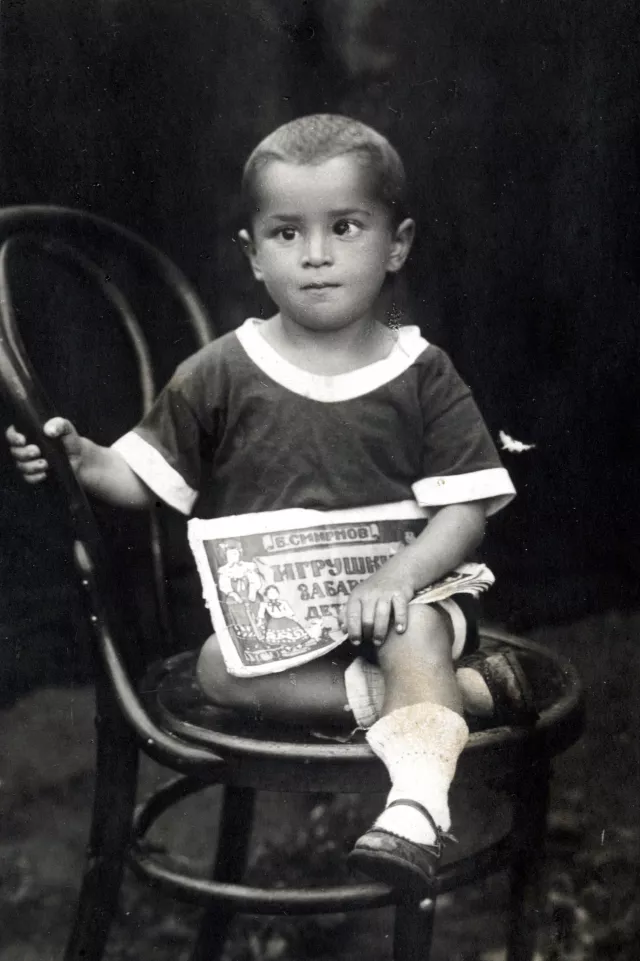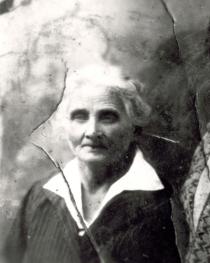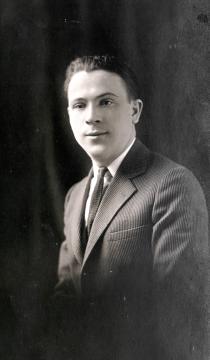Moisey Goihberg
This is a photo of me taken on my 3rd birthday in Yaruga in 1924. It was a tradition in our family that the children were taken to a photo studio to have a photo taken on their birthday.
I was born in Ivanovka on 23rd May 1921 and was named after my grandfather Moisey. I was 6 months old when my parents sold their house and moved to my mother's parents home in Yaruga.
There, my father bought a vineyard. We lived near my grandmother Blima and Aunt Rachel. My father bought half of a house. We had two rooms: a dining room, a bedroom, and a kitchen. The toilet was in the yard. There were mainly old wooden houses in Yaruga, but our house was made of stone. The houses were close to one another, very much like those in Marc Chagall's paintings. I can't remember the titles of his pictures, but the village resembled the images created by this artist. There were no gardens near the houses. There was a shed near our houses where we kept two horses before the collectivization. I also used to keep rabbits in this shed. My mother bought vegetables and meat from the local Ukrainian farmers - it wasn't kosher. My mother was a wonderful cook. She baked delicious bread.
There were 3 synagogues in Yaruga. Each one was attended by members of different professional guilds. This was a tradition. Perhaps, it was for the sake of seeing and talking to one another. Besides, they all contributed money and it was good to know that the money went to their own group. My parents attended the largest synagogue of vine growers only on holidays. There were rabbis, a schochet and a melamed in Yaruga. There was a cheder at the synagogue. I didn't attend it, but I remember other boys going to the cheder wearing kippot and carrying huge volumes of the Talmud.
On Sundays there was a market in the central square where farmers from the surrounding villages came to sell their food products. They came on horseback or in bull driven carts or on foot. Those who came on foot put on their shoes before they entered the town, as they were walking barefoot. Girls, women and men wore beautiful embroidered blouses and shirts. Men wore sheepskin hats at rakish angles. The market lasted a whole day. By the end of the day many men got drunk and there were fights. But they didn't touch Jews. I don't remember one single expression of anti-Semitism in pre-war Yaruga. This bright, colorful market existed until the late 1920s.
There was also a cultural center or club in Yaruga. People turned one of the bigger sheds into a club. There was an amateur theater organized in this club in the late 1920s. They staged some plays by Jewish writers; one of them was Sholem Aleichem, whose plays were staged in Yiddish. The local Jews spoke Yiddish. They communicated with the Ukrainian farmers in Ukrainian. Ukrainian farmers also knew some Yiddish.

















